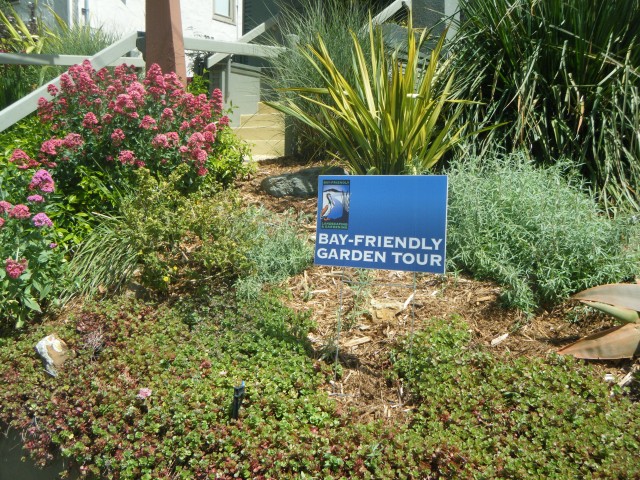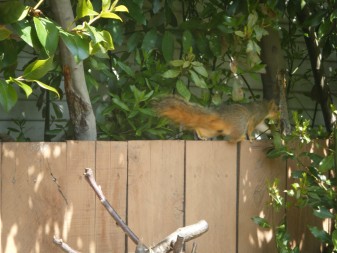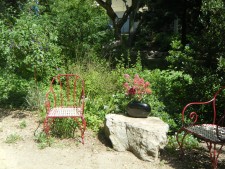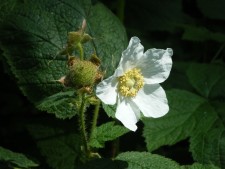
Imagine this audacious plan: we return our grid of manicured yards into watershed and wildlife-friendly spaces. From a bird or butterfly’s perspective, it would be a transformation from sterile segmented turf fields to bounteous habitat full of nectar plants, insects, hiding places and nesting spaces. This "Bay-Friendly"
gardens initiative is underway around the Bay Area under the sponsorship of Stopwaste.org. Last weekend some generous, certified “Bay-Friendly” garden owners opened their yards for tours.

We were able to purchase a tour booklet and tickets to gain entry to meander around and view the seven principles of "Bay-Friendly" gardening used in very different ways. As their website states, "It’s an approach to landscaping with room for lots of personal preferences and interpretations." The gardens were beautiful, creative, and a great way to bring the natural world into people’s every day lives.
What struck me was the amount of insect and wildlife activity in the featured gardens. These gardens were busy with insects visiting flowers on the sunny Sunday afternoon. Squirrels scampered through the trees and a variety of birds were flitting about and calling from the shelter of trees and shrubs. Like little wildlife havens, the yards were alive with an abundant diversity of plants and wildlife compared with other nearby yards of traditional turf grass and ornamental plants.

"Bay-Friendly" gardening also calls for the limited use of pesticides. Toxic chemicals, along with trash pollution, pose big problems to our bay and creeks. Diazinon and chlorpyrifos are two commonly used insecticides. According to a report by TDC Environmental, the two are “of great concern, because elevated levels of the two pesticides have been linked to findings of toxicity in wastewater treatment plant effluent, storm water runoff, urban creeks (including all San Francisco Bay area urban creeks), estuaries (including San Francisco Bay), and the Sacramento River. Much of this toxicity occurs in urban areas, apparently reflecting urban releases—rather than agricultural releases—of diazinon and chlorpyrifos.”

"Bay-Friendly" gardens seem to need fewer pest control measures because the owners strive to create healthier soil conditions, choose plants that are best suited to our climate and location in the garden which, in turn, encourages beneficial insects. Ultimately this combination keeps the pest populations in better balance. When control measures are called for, there are resources available to help you choose those least toxic to the environment. Our Water, Our World website has some great resources including a downloadable pocket guide.
